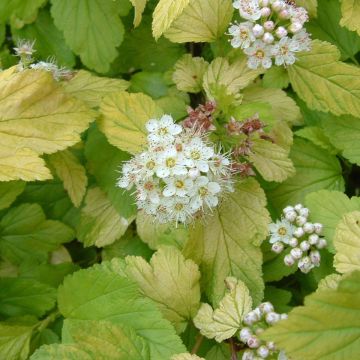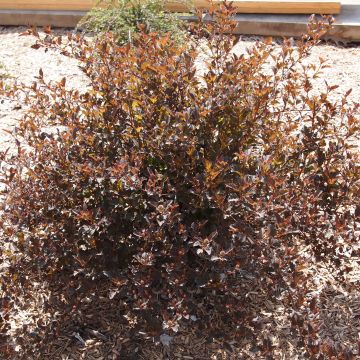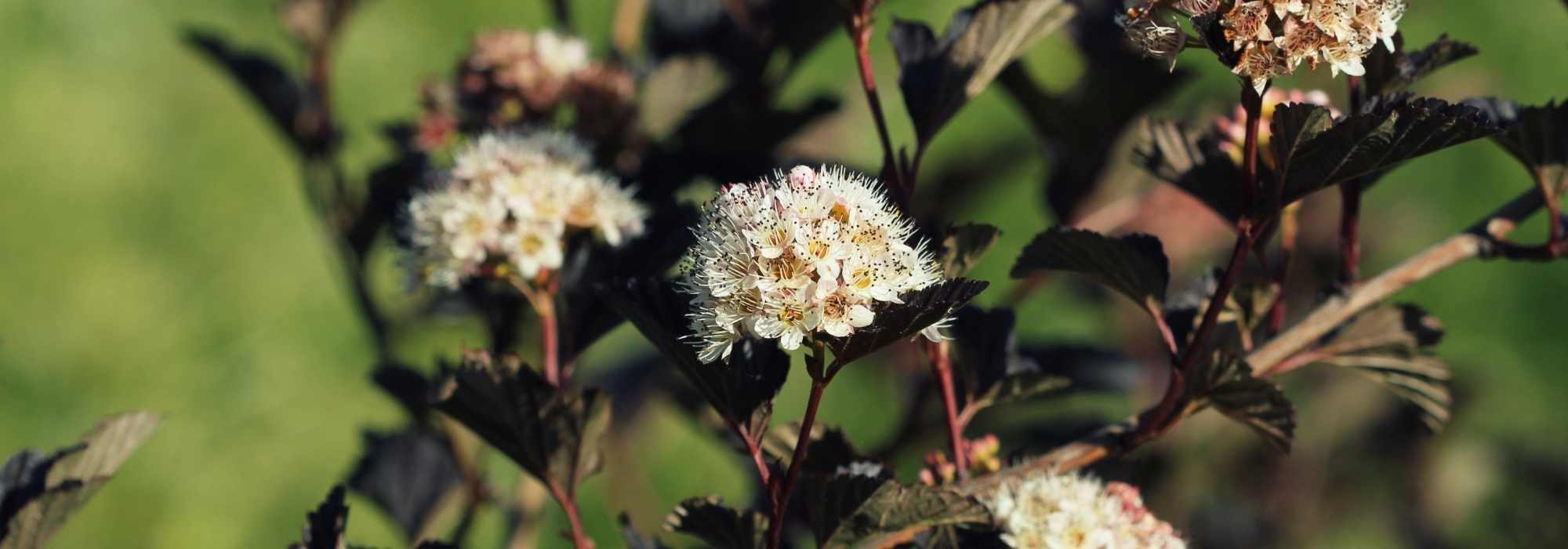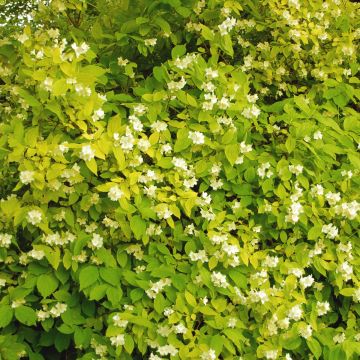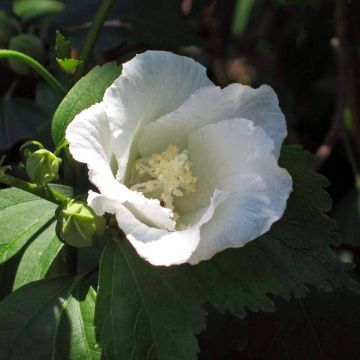

Physocarpus opulifolius Black Light - Ninebark


Physocarpus opulifolius Black Light - Ninebark
Physocarpus opulifolius Black Light - Ninebark
Physocarpus opulifolius Black light
Ninebark
Gorgeous bush. Planted it quickly after it arrived. Couldn't wait for it to settle in. I'll update you on its progress next spring. I paired its dark foliage with vibrant purple heucheras and yellow coreopsis. Fabulous outcome!
Laetitia, 11/10/2024
Special offer!
Receive a €20 voucher for any order over €90 (excluding delivery costs, credit notes, and plastic-free options)!
1- Add your favorite plants to your cart.
2- Once you have reached €90, confirm your order (you can even choose the delivery date!).
3- As soon as your order is shipped, you will receive an email containing your voucher code, valid for 3 months (90 days).
Your voucher is unique and can only be used once, for any order with a minimum value of €20, excluding delivery costs.
Can be combined with other current offers, non-divisible and non-refundable.
Home or relay delivery (depending on size and destination)
Schedule delivery date,
and select date in basket
This plant carries a 24 months recovery warranty
More information
We guarantee the quality of our plants for a full growing cycle, and will replace at our expense any plant that fails to recover under normal climatic and planting conditions.

Would this plant suit my garden?
Set up your Plantfit profile →
Description
Physocarpus opulifolius 'Black Light' is a variety of Sapwood-leaved Physocarpus with some of the darkest foliage there is. Its trilobed leaves are a remarkably dark purple, very close to black, with a beautiful glossy appearance. In early summer, its dark foliage serves as a backdrop for a beautiful white flowering in corymb, creating a strong contrast in the garden. This medium-sized plant is easy to grow in most situations. Hardy, it adapts to virtually all soils, from acidic to moderately chalky, moist to not too dry, in full sun or partial shade. This little botanical gem is a great choice for a small garden.
Physocarpus opulifolius belongs to the large and important family of Rosaceae, which gives us so many ornamental species (Roses of course, but also Photinia, Cotoneaster, Amelanchier...) as well as most of our temperate climate fruit trees (Pear, Apple, Cherry, Peach, Apricot, Plum...). This Physocarpus is a species native to the eastern United States, up to Quebec (where it is known by the lovely name of "wood with 9 barks") and Manitoba. It forms a fairly large bush, about 3m (10ft) in all directions, with lobed leaves reminiscent of the guelder rose (Viburnum opulus, hence the species name of this Physocarpus opulifolius). This ornamental species was introduced to Europe as early as the end of the seventeenth century, but it is only in recent years with the development of many cultivars that it has spread to our gardens.
The 'Black Light' Physocarpus is a very recent creation (2019) from the Minier Nurseries near Angers. This charming bush was selected for its exceptionally dark purple foliage, darker than the famous 'Diabolo'. With their well-defined lobes and exceptional dark colour, the leaves with their satin-like surface reflect light like a body of water. This superb attire is adorned in June-July with beautiful white flowers in numerous corymbs, which stand out clearly against this dark mass. Nectar-rich, the flowers are highly visited by pollinating insects. They are followed by red fruits in the shape of small bladders, appreciated by birds in autumn.
Despite its modest size, about 1.50m (5ft) in all directions, Black Light easily captures attention. Of medium growth, this bush benefits from being pruned in spring to encourage the emergence of new shoots and to maintain its very dense appearance, which is part of its charm. Truly hardy (down to -25°C at least), it is a rather accommodating and easy-to-grow bush. Its limited development and good pruning tolerance allow it to be grown in the smallest gardens.
The 'Black Light' Physocarpus will be ideal in a flowerbed, to create contrasts with bushes with light or golden foliage. It will be perfect in the sun alongside Cotinus coggygria 'Golden Lady', a small tree with golden green foliage, creating a strong contrast. In a slightly shaded area, the same effect can be achieved with a Philadelphus coronarius 'Aureus', a golden version of the well-known Mock Orange. In a sunny contemporary garden, a very stylish combination would be to plant it behind the Perovskia 'Silvery Blue', with its light grey foliage and lavender-blue flowers. In the foreground, the very graphic Phlomis russeliana, with its trailing green leaves and yellow flowers, will also have a strong impact, as well as Epimediums, whose delicate flowering will be enhanced by the black background of our Physocarpus.
Physocarpus opulifolius Black Light - Ninebark in pictures




Plant habit
Flowering
Foliage
Botanical data
Physocarpus
opulifolius
Black light
Rosaceae
Ninebark
Cultivar or hybrid
Other Physocarpus
View all →Planting and care
Plant Physocarpus opulifolius 'Black Light' in deep, humus-rich, fertile soil that is not too dry, preferably neutral to acidic. It fears an excess of limestone, long dry periods, and thrives in poor soils. Dig a hole 50 by 50cm (20in) and add compost-enriched soil to the bottom, mixing it with the existing soil. Soak the root ball in a bucket of water for fifteen minutes (until no more bubbles rise to the surface), plant it in the hole, backfill, and then water generously. Water regularly for the first two years and during dry summers. Once well-rooted, this Physocarpus proves relatively resistant to water shortage (in not overly hot climates, however).
This bush will thrive in partial shade or in full sun, but the foliage colors will be more pronounced if planted in a sunny location. Thin out dense plants by pruning severely some of the arching stems after flowering. This may promote the emergence of new flower buds later in the summer. Prune very short in spring, near the vine-plant, to give it a denser appearance.
Planting period
Intended location
Care
Planting & care advice
-
, onOrder confirmed
Reply from on Promesse de fleurs
Similar products
Haven't found what you were looking for?
Hardiness is the lowest winter temperature a plant can endure without suffering serious damage or even dying. However, hardiness is affected by location (a sheltered area, such as a patio), protection (winter cover) and soil type (hardiness is improved by well-drained soil).

Photo Sharing Terms & Conditions
In order to encourage gardeners to interact and share their experiences, Promesse de fleurs offers various media enabling content to be uploaded onto its Site - in particular via the ‘Photo sharing’ module.
The User agrees to refrain from:
- Posting any content that is illegal, prejudicial, insulting, racist, inciteful to hatred, revisionist, contrary to public decency, that infringes on privacy or on the privacy rights of third parties, in particular the publicity rights of persons and goods, intellectual property rights, or the right to privacy.
- Submitting content on behalf of a third party;
- Impersonate the identity of a third party and/or publish any personal information about a third party;
In general, the User undertakes to refrain from any unethical behaviour.
All Content (in particular text, comments, files, images, photos, videos, creative works, etc.), which may be subject to property or intellectual property rights, image or other private rights, shall remain the property of the User, subject to the limited rights granted by the terms of the licence granted by Promesse de fleurs as stated below. Users are at liberty to publish or not to publish such Content on the Site, notably via the ‘Photo Sharing’ facility, and accept that this Content shall be made public and freely accessible, notably on the Internet.
Users further acknowledge, undertake to have ,and guarantee that they hold all necessary rights and permissions to publish such material on the Site, in particular with regard to the legislation in force pertaining to any privacy, property, intellectual property, image, or contractual rights, or rights of any other nature. By publishing such Content on the Site, Users acknowledge accepting full liability as publishers of the Content within the meaning of the law, and grant Promesse de fleurs, free of charge, an inclusive, worldwide licence for the said Content for the entire duration of its publication, including all reproduction, representation, up/downloading, displaying, performing, transmission, and storage rights.
Users also grant permission for their name to be linked to the Content and accept that this link may not always be made available.
By engaging in posting material, Users consent to their Content becoming automatically accessible on the Internet, in particular on other sites and/or blogs and/or web pages of the Promesse de fleurs site, including in particular social pages and the Promesse de fleurs catalogue.
Users may secure the removal of entrusted content free of charge by issuing a simple request via our contact form.
The flowering period indicated on our website applies to countries and regions located in USDA zone 8 (France, the United Kingdom, Ireland, the Netherlands, etc.)
It will vary according to where you live:
- In zones 9 to 10 (Italy, Spain, Greece, etc.), flowering will occur about 2 to 4 weeks earlier.
- In zones 6 to 7 (Germany, Poland, Slovenia, and lower mountainous regions), flowering will be delayed by 2 to 3 weeks.
- In zone 5 (Central Europe, Scandinavia), blooming will be delayed by 3 to 5 weeks.
In temperate climates, pruning of spring-flowering shrubs (forsythia, spireas, etc.) should be done just after flowering.
Pruning of summer-flowering shrubs (Indian Lilac, Perovskia, etc.) can be done in winter or spring.
In cold regions as well as with frost-sensitive plants, avoid pruning too early when severe frosts may still occur.
The planting period indicated on our website applies to countries and regions located in USDA zone 8 (France, United Kingdom, Ireland, Netherlands).
It will vary according to where you live:
- In Mediterranean zones (Marseille, Madrid, Milan, etc.), autumn and winter are the best planting periods.
- In continental zones (Strasbourg, Munich, Vienna, etc.), delay planting by 2 to 3 weeks in spring and bring it forward by 2 to 4 weeks in autumn.
- In mountainous regions (the Alps, Pyrenees, Carpathians, etc.), it is best to plant in late spring (May-June) or late summer (August-September).
The harvesting period indicated on our website applies to countries and regions in USDA zone 8 (France, England, Ireland, the Netherlands).
In colder areas (Scandinavia, Poland, Austria...) fruit and vegetable harvests are likely to be delayed by 3-4 weeks.
In warmer areas (Italy, Spain, Greece, etc.), harvesting will probably take place earlier, depending on weather conditions.
The sowing periods indicated on our website apply to countries and regions within USDA Zone 8 (France, UK, Ireland, Netherlands).
In colder areas (Scandinavia, Poland, Austria...), delay any outdoor sowing by 3-4 weeks, or sow under glass.
In warmer climes (Italy, Spain, Greece, etc.), bring outdoor sowing forward by a few weeks.


































